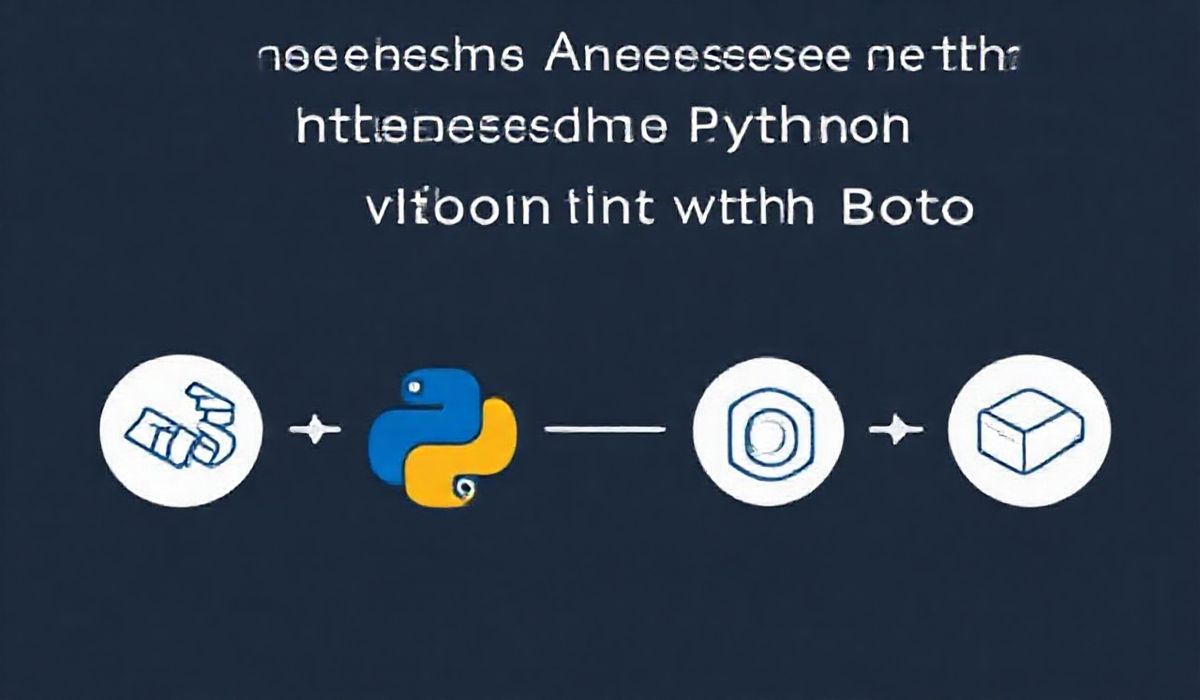Mastering Boto3: The Ultimate Guide to AWS SDK for Python
Boto3 is the official Python software development kit (SDK) for Amazon Web Services (AWS). It enables developers to interact with AWS services effortlessly, including S3, EC2, DynamoDB, Lambda, and dozens more. Boto3 provides low-level service clients and high-level resource abstractions, making it versatile and convenient for various use cases. In this guide, we’ll explore numerous Boto3 APIs with rich code snippets and even demonstrate how to build a sample app using Boto3.
Core Features of Boto3
- Access AWS services such as EC2, S3, DynamoDB, and Lambda programmatically.
- High-level abstractions for interacting with resources.
- Thread-safe and efficient in managing AWS credentials.
Code Snippets for Essential Boto3 APIs
1. Amazon S3: File Upload and Download
S3 is a widely-used object storage service. Here’s how you can upload and download files:
import boto3
# Initialize S3 client
s3 = boto3.client('s3')
# Upload a file
s3.upload_file('local_file.txt', 'your_bucket_name', 'uploaded_file.txt')
# Download a file
s3.download_file('your_bucket_name', 'uploaded_file.txt', 'local_file_downloaded.txt')
2. Amazon EC2: Managing Instances
Launch, stop, and describe EC2 instances with these examples:
ec2 = boto3.resource('ec2')
# Launch a new instance
instances = ec2.create_instances(
ImageId='ami-12345678',
MinCount=1,
MaxCount=1,
InstanceType='t2.micro'
)
print("Launched EC2 Instance:", instances[0].id)
# Stop an instance
ec2_client = boto3.client('ec2')
ec2_client.stop_instances(InstanceIds=['i-instanceid12345'])
# List all instances
for instance in ec2.instances.all():
print(instance.id, instance.state)
3. DynamoDB: Create and Query Tables
Interact with DynamoDB tables programmatically.
dynamodb = boto3.resource('dynamodb')
# Create table
table = dynamodb.create_table(
TableName='MyTable',
KeySchema=[{'AttributeName': 'id', 'KeyType': 'HASH'}],
AttributeDefinitions=[{'AttributeName': 'id', 'AttributeType': 'S'}],
ProvisionedThroughput={'ReadCapacityUnits': 1, 'WriteCapacityUnits': 1}
)
print("Table created:", table.table_status)
# Insert an item
table.put_item(Item={'id': '123', 'name': 'John Doe', 'age': 30})
# Query items
response = table.get_item(Key={'id': '123'})
print("Queried item:", response['Item'])
4. AWS Lambda: Invoke a Function
lambda_client = boto3.client('lambda')
# Invoke a Lambda function
response = lambda_client.invoke(
FunctionName='my_lambda_function',
InvocationType='RequestResponse',
Payload=json.dumps({'key': 'value'})
)
print("Lambda result:", response['Payload'].read())
Building a Sample Application: S3 File Uploader
Let’s create a sample app that allows a user to upload files to S3 via Python:
Step 1: Install Dependencies
pip install boto3 pip install flask
Step 2: Implement the App
from flask import Flask, request, jsonify
import boto3
app = Flask(__name__)
s3 = boto3.client('s3', region_name='your-region')
@app.route('/upload', methods=['POST'])
def upload_file():
file = request.files['file']
bucket_name = 'your_bucket_name'
# Upload file to S3
s3.upload_fileobj(file, bucket_name, file.filename)
return jsonify({'message': 'File uploaded successfully.', 'filename': file.filename})
if __name__ == '__main__':
app.run(debug=True)
This Flask-based application accepts a file through POST requests and uploads it to an S3 bucket. You can extend this by adding features like listing uploaded files or downloading them.
Conclusion
Boto3 is a powerful toolkit for AWS automation and integration tasks. With just a few lines of code, developers can leverage AWS’s broad suite of services. From this guide, you have learned essential Boto3 APIs and built a functional application. Explore further and unlock the full potential of Boto3 in your projects.




